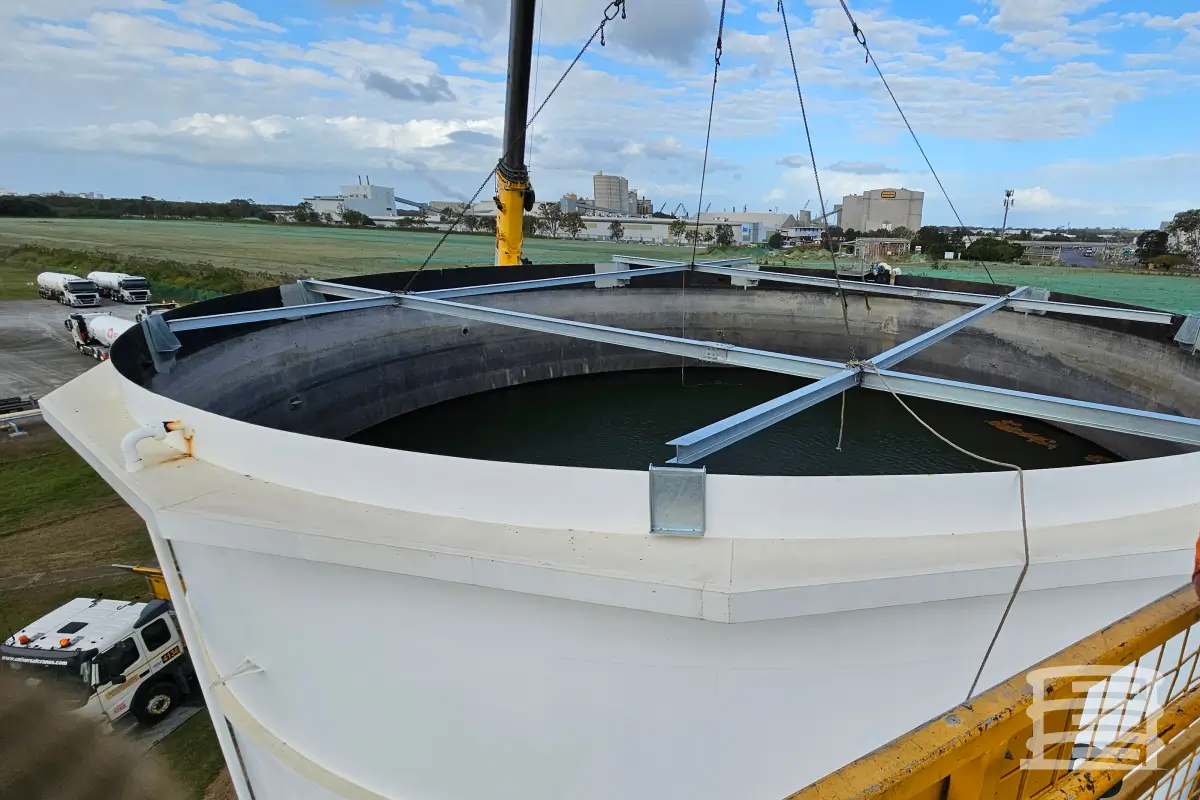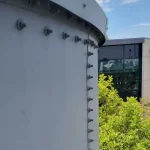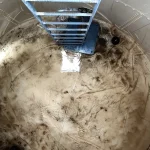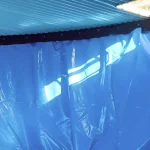From gauges and valves to vents and drains, every part of your tank system works together to keep it running smoothly, safely, and efficiently. No matter if your tank is used commercially, industrially, or even at home, all these components (often called “tank appurtenances”) play vital roles. Regular inspections are essential to ensure everything is functioning properly.
What are Storage Tank Appurtenances?
Appurtenances to a storage tank include all components and accessories directly attached to it or located nearby. These elements are essential for maintaining the functionality of the entire tank system.
Here are some common tank accessories:
- Pipes and valves facilitate the introduction of fluids or gases into the tank.
- Gauges monitor the levels of fluids and gases within the tank.
- Vents are installed to release excess pressure, preventing tank explosions.
- Drain systems empty the tank of standing water or other undesired substances.
- Overflow pipes prevent tank overfilling.
- Sampling techniques are used to test the tank contents.
- Organized fire safety measures and fire prevention methods are also crucial components.
The Importance of Inspecting Tank Appurtenances
Keeping an eye on attachments is crucial in construction and maintenance. Why? Because it safeguards the strength and safety of buildings and their components.
Beyond the main structure, buildings have numerous attachments like staircases, railings, elevators, alarms, plumbing, and electrical systems. These elements are essential for the building to function properly and safely. Regular inspections are vital to catch any potential problems before they become hazards or lead to damage, like leaks in water tanks.
Tank inspections are another critical piece of the puzzle. They help detect and prevent issues like corrosion, wear and tear, and damage from weather or simply getting old. These inspections also ensure the building meets current safety codes and avoids any violations. This reduces the risk of injuries or worse for people in the building and minimizes the likelihood of property damage.
Top Benefits of Regular Tank Appurtenances Inspection
Inspections of building components offer numerous advantages, including:
- Routine inspections are crucial for identifying and promptly addressing potential safety hazards such as loose fixtures, uneven surfaces, and malfunctioning alarms. This proactive approach significantly reduces the risk of injury to building occupants.
- Inspections play a vital role in identifying issues with building components such as plumbing fixtures, elevators, and electrical systems, ensuring they function effectively.
- Inspections help mitigate the risk of fines and legal obligations by ensuring building components comply with local codes and regulations.
- Regular inspection and maintenance can prolong the lifespan of building components, reducing the need for frequent replacements and saving money over time.
- Building owners, tenants, and management gain peace of mind knowing that building components, including corrosion-free water tanks, have been assessed and are in optimal working condition.
Signs that Your Tank Appurtenances is Damaged
You can easily detect if your tank appurtenances are damaged by looking out for these indicators:
- Leaks: Check for puddles or signs of gas or fluid seepage around the tank, which may indicate leaks from valves, gauges, or other components.
- Audible Sounds: A hissing or whistling sound from the tank could indicate issues with vents or other components.
- Inaccurate Readings: If gauges or meters show inaccurate readings, it could signal damage or malfunction within the tank’s components.
- Abnormal Tank Behavior: Sudden pressure releases or incomplete filling might indicate accessory malfunctions.
- Structural Issues: Uneven or sagging structures like staircases, balconies, or elevators could indicate structural deterioration related to tank installations.
- Electrical Problems: Non-functional alarms and lights, especially fire alarms and emergency lighting systems, may indicate electrical issues that need addressing.
- Safety Hazards: Uneven or slippery surfaces such as stairs or walkways could pose tripping hazards, necessitating repairs or replacements.
- Mechanical Noises: Audible squeaking or grinding noises from elevators or staircases could indicate mechanical issues requiring maintenance.

Looking for a Professional Inspection Team for Your Tank Accessories?
NFPA 25 Inspections by American Tanks offers the ideal inspection service for your water tank accessories! We conduct thorough inspections of your commercial and industrial water or chemical storage tank accessories, ensuring compliance with all relevant regulations to uphold the safety and integrity of your tanks.
Call NFPA 25 Inspections by American Tanks at +1 800 656 0167
Or email at info@nfpa25inspections.com







